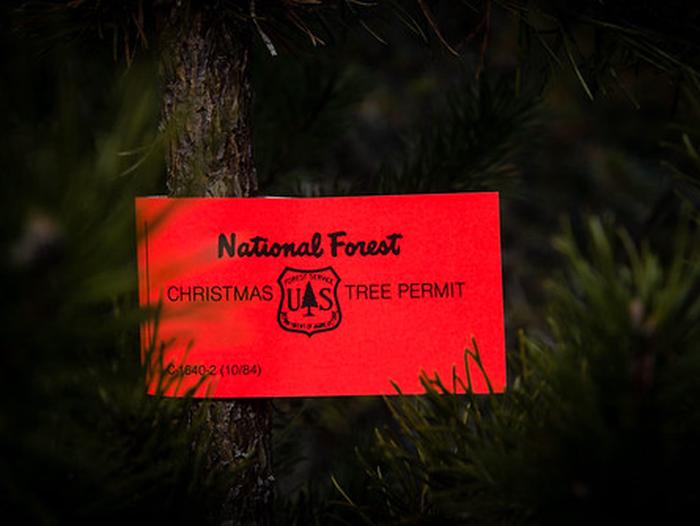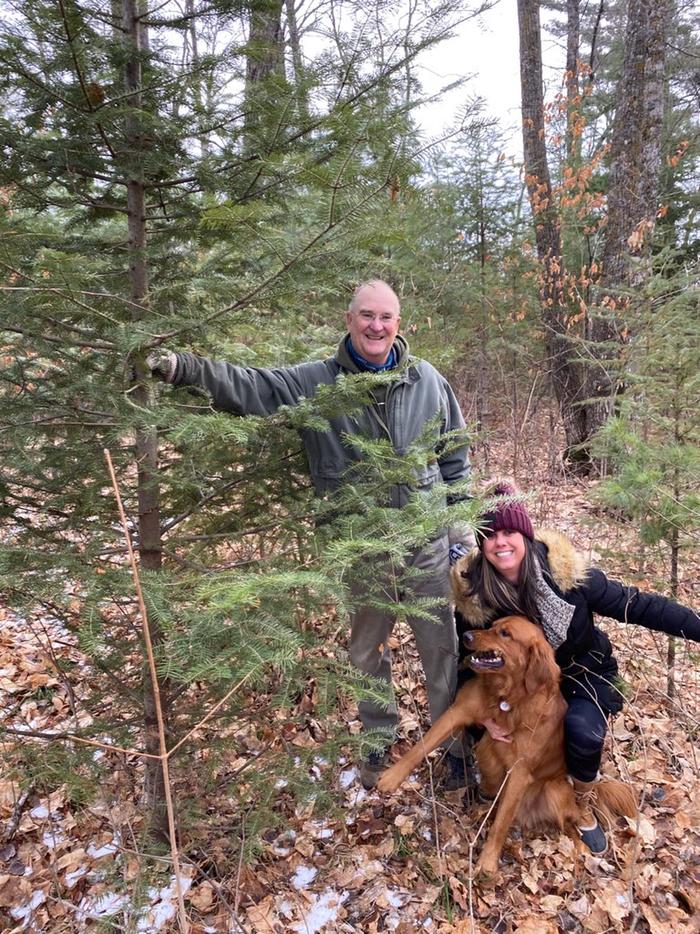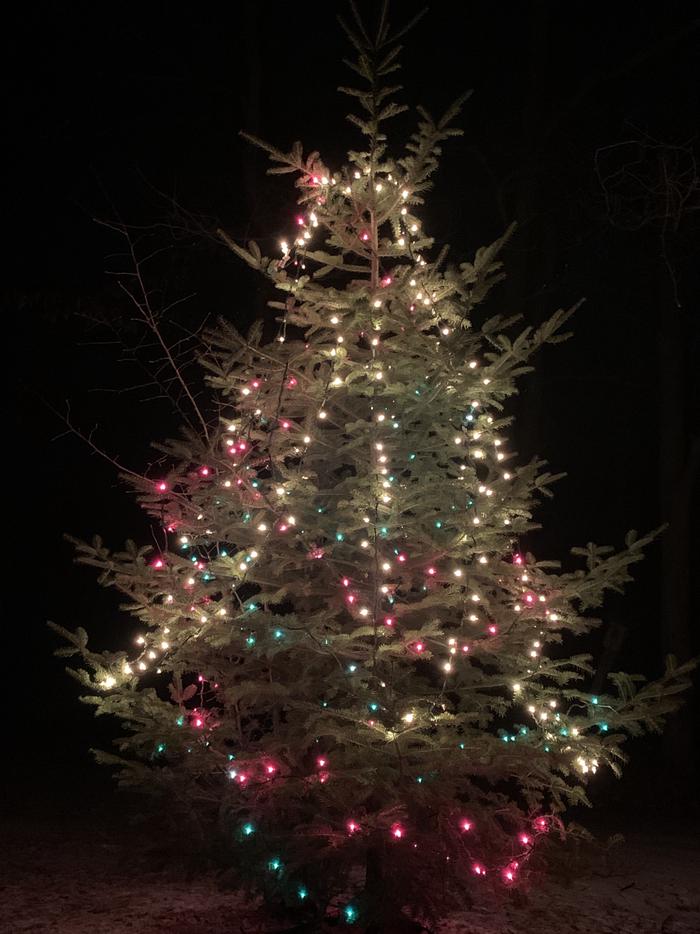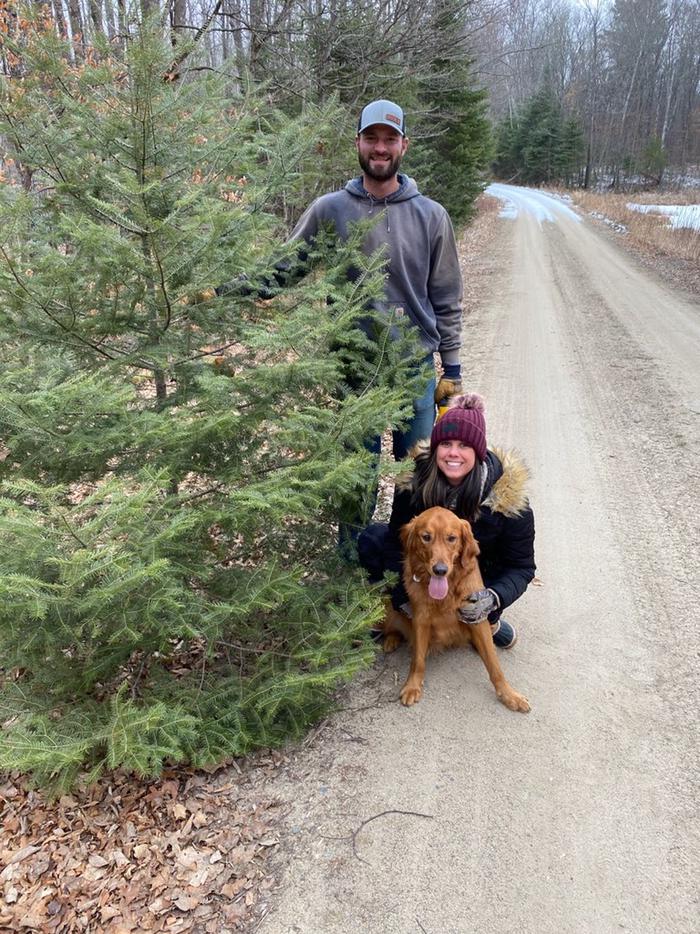Chippewa National Forest Christmas Tree Permit
Chippewa National Forest
Many families begin their holiday season by cutting their own Christmas tree from the Chippewa National Forest. All you need is this permit, sharp axe, thermos of cocoa and a little patience. Away from the holiday rush, families discover the peace of the forest surrounded by winter white. Trees can be cut on Chippewa National Forest land, with the exception of administrative sites and recreation areas such as campgrounds and within view of roads and trails.
Lifelong memories are built during the holidays and we are happy to help with any information you'll need to make your tree cutting trip a safe and enjoyable one. Please be sure to read and agree to all the tips and guidelines when selecting your tree.
Check out our USFS webpage for more information!
Emerald ash borer (EAB) has been confirmed by the Minnesota Department of Agriculture (MDA) in Cass County, including a small portion (southeast) of the Chippewa National Forest. The MDA has enacted an emergency quarantine area surrounding the EAB Generally Infested Area.
MDA is enacting an emergency quarantine for an eastern portion of the county, which limits the movement of firewood and ash material out of the area. The south and east side of the quarantine is the county border. The northern edge of the quarantine follows Minnesota Highway 200 west to County Road 129, County Road 129 south to County Road 7, and County Road 7 west to Minnesota Highway 84. The western border of the quarantine is Minnesota Highway 84 to County Road 79 and east to the county line Map Link :
No regulated articles are legally allowed to move outside of the EAB quarantine area. Regulated items include:
- Ash logs
- Ash tree waste
- Ash chips and mulch
- All firewood of non-coniferous (hardwood) species
Need to Know
Selecting Your Tree
Each forest has limitations on the size of the tree you can cut and the species of trees that are permitted. See below to help you measure and choose a tree that meets your permit's guidelines.
Take the whole tree. Do not remove the top of the tree; cut down the entire tree.
If snow is on the ground, remove it from around the stump so you can accurately measure the stump and tree height.
Some of the more common local conifer species often used for Christmas trees: Red Pine, Balsam Fir, Black and White Spruce
Where to Cut Your Tree
Permit is only valid on lands managed by the Chippewa National Forest. Do not cut on private lands or lands manged by other federal, state, or local agencies.
Do not cut within 150 feet of state highways, picnic areas, designated campgrounds, or other developed areas.
Do not cut in active timber sales or areas that have been planted with new trees.
Do not cut trees within 300 feet of streams and bodies of water.
Suggested areas on the Chippewa: Tanglewood Road (FR-3759) - eight miles east of Walker and connects to County Road-124 Species: Pine, Fir and Spruce
FR-2816, which goes east from County Road-50 - an open road, but not on our Forest map. It is about 2.5 miles south of Hwy 34 on CR-50. Species: Spruce
Good roads to travel that have a lot of Forest property along them: Species: Pine, Fir and Spruce
County Road 129 and FR-2103 south of Hwy 200 near Mable Lake.
FR-2104 (Mable Lake Road)
County Road 53 North of Hwy 200.
South of Hwy 2: Portage Road (FR-2131) ; Sucker Bay Road (FR-2132); Ketchum Road (FR-2135); Cuba Hill Road (FR-133)
Planning Your Trip
Helpful Cutting Tips
Carry your tree carefully out of the woods. Dragging the tree will rub off needles and bark. If the tree is too big to transport inside of your vehicle, wrap it in canvas to prevent wind damage.
Once home, cut the bottom of the trunk off and place the freshly cut trunk in a bucket of water. Replenish water. If storing your tree outside for a few days before putting it in the house, keep it in an area protected from the wind, such as the north or east side of your house or under a shaded tree.
Choose a tree from a dense forested area, which will give the remaining trees more space to grow. Cut the leftover branches from the stump and scatter them.
How to Plan Your Trip
Before you leave home, be sure to measure the space where you plan to place the tree in your home (height and width), and measure the space of your vehicle you will use to transport the tree.
You must print and bring your Christmas Tree Permit with you. Bring a map with you. Don’t rely on GPS because it may not be up-to-date with forest service roads.
Tools to consider bringing with you include a measuring tape to ensure you select a tree that fits in your home; handsaw to cut your tree; gloves to protect your hands; boots to protect your feet; a tarp to sit on and/or to move your tree once it's cut; and rope or straps and a tarp to secure your tree to your vehicle.
Cell service may be spotty or unavailable. Be sure someone knows where you are and when to expect you back. Bring plenty of food and water with you as well as an overnight survival kit in case you become stranded. Start your day early. Be sure to find your tree and leave the woods before dark.
Check the latest weather conditions, forest warnings and road closures before you leave on your trip. Dress warmly and take extra dry clothes. Expect winter weather, including cold temperatures, snow and winds.
Roads may not be plowed. Carry tire chains, shovel(s) and a tow chain. Be sure your vehicle has a full tank of gas. Bring a spare key and give it to someone else in your party. Don’t get locked out of your car! Park in areas so that traffic can get by safely, and do not block gates.
Emerald ash borer (EAB) has been confirmed by the Minnesota Department of Agriculture (MDA) in Cass County, including a small portion (southeast) of the Chippewa National Forest. The MDA has enacted an emergency quarantine area surrounding the EAB Generally Infested Area.
MDA is enacting an emergency quarantine for an eastern portion of the county, which limits the movement of firewood and ash material out of the area. The south and east side of the quarantine is the county border. The northern edge of the quarantine follows Minnesota Highway 200 west to County Road 129, County Road 129 south to County Road 7, and County Road 7 west to Minnesota Highway 84. The western border of the quarantine is Minnesota Highway 84 to County Road 79 and east to the county line Map Link: https://content.govdelivery.com/attachments/MNMDA/2023/10/11/
file_attachments/2643704/Cass%20EAB%20map.png
No regulated articles are legally allowed to move outside of the EAB quarantine area. Regulated items include:
Ash logs, Ash tree waste, Ash chips and mulch, All firewood of non-coniferous (hardwood) species.
Photo Gallery





